Discover 15 hidden attractions, cool sights, and unusual things to do in Jerez de la Frontera (Spain). Don't miss out on these must-see attractions: Jerez de la Frontera Cathedral, Alcázar de Jerez, and Monument to Primo de Rivera. Also, be sure to include Museo Arqueológico Municipal de Jerez de la Frontera in your itinerary.
Below, you can find the list of the most amazing places you should visit in Jerez de la Frontera (Andalusia).
Table of Contents
Jerez de la Frontera Cathedral

Also known as: Catedral de Jerez de la Frontera
Circa-1600s Catholic cathedral. Jerez de la Frontera Cathedral is a Catholic church located in Jerez de la Frontera, Andalusia, southern Spain. It is the seat of the Roman Catholic Diocese of Asidonia-Jerez. It was declared Bien de Interés Cultural in 1931.[1]
Address: Plaza Encarnacion s/n, 11403 Jerez De La Frontera
Alcázar de Jerez

Palace and gardens in a Moorish fortress. The Alcázar of Jerez de la Frontera is a former Moorish alcázar, now housing a park, in Jerez de la Frontera, in the South of Spain. It was declared a Bien de Interés Cultural in 1931.
The first fortress was probably built in the 11th-century, when Jerez was part of the small kingdom of the Taifa of Arcos de la Frontera, on a site settled since prehistoric times in the south-eastern corner of the city. In the 12th-century, a new structure was erected to be used as both residence and fortress by the Almohad Caliphate. Later, after the Reconquista, it was the seat of the first Christian mayors and its development continued with a palace and other structures. The alcázar is one of a few structures that best exemplify Almohad architecture in the Iberian Peninsula.
Features include:
- a grossly quadrangular line of walls, with a perimeter of approximately 4,000 m
- the Octagonal Tower, in Almohad style
- the Tower of Ponce de León (14th-century), annexed to the keep.
- a mosque, the only remaining of the eighteen once present in the city. After the Christian conquest of the fortress in 1261, it was put under the command of Nuño González de Lara. Later, it was turned into a church dedicated to the Virgin Mary by King Alfonso X of Castile. The minaret, still extant, was turned into a bell tower. The prayer hall, preceded by a small room of ritual ablutions, features a mihrab, indicating the direction of Mecca, and a rib vault with a circular window at the top.
- the Palace of the Patio de Doña Blanca, dating to the 12th-century Islamic structure, originally a leisure pavilion
- the bathhouse (hammam), they include an entrance area for undressing, leading to the cold and warm rooms, the latter being the largest in the complex. The final room is the hot room, whose heating system is still partially visible.
- the Palace of Villavicencio, built in 1664 in Baroque style.
Address: Calle Alameda Vieja, 11403 Jerez de la Frontera
Monument to Primo de Rivera
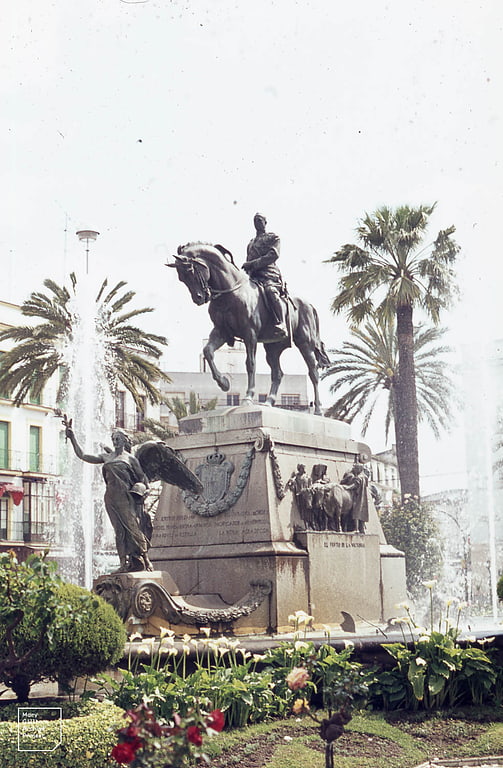
The monument to Primo de Rivera is an instance of public art in Jerez de la Frontera, Spain. It consists of a bronze equestrian statue of Miguel Primo de Rivera, on top of a sculptural ensemble placed inside a fountain. It lies at the centre of the Plaza del Arenal.[3]
Museo Arqueológico Municipal de Jerez de la Frontera
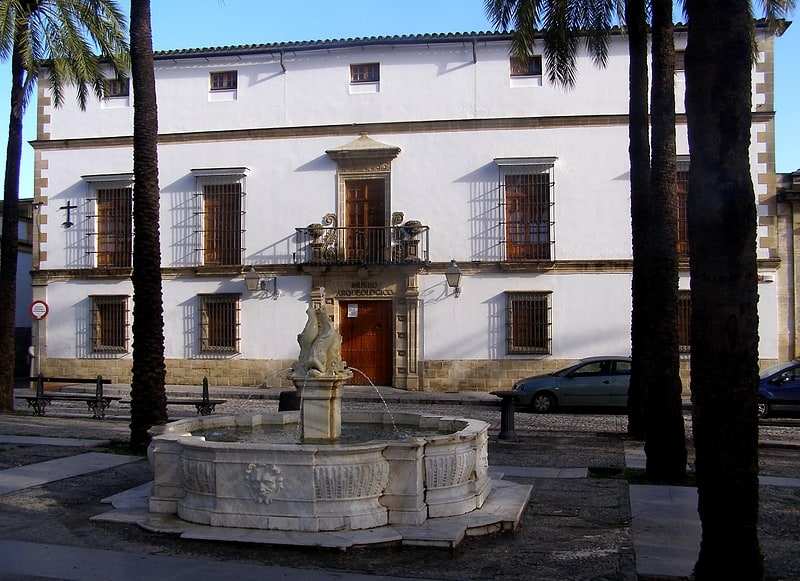
Museum in Jerez de la Frontera, Spain. The Museo Arqueológico Municipal de Jerez de la Frontera is an archaeological museum on the Plaza del Mercado in Jerez de la Frontera, province of Cádiz, southern Spain. The museum occupies an 18th-century building which was declared Bien de Interés Cultural in 1962.
It was established in 1873 as the Municipal Archaeological Collection, merging collections donated by wealthy individuals, and based at the Old City Hall of Jerez de la Frontera. The museum opened to the public in 1935. The collection includes a Corinthian helmet, extremely rare in Spain, found near the city's Charterhouse by the river Guadalete. The collection also includes Roman ceramics and other items.[4]
Address: Plaza Mercado 0, 11408 Jerez De La Frontera
Palace of Bertemati
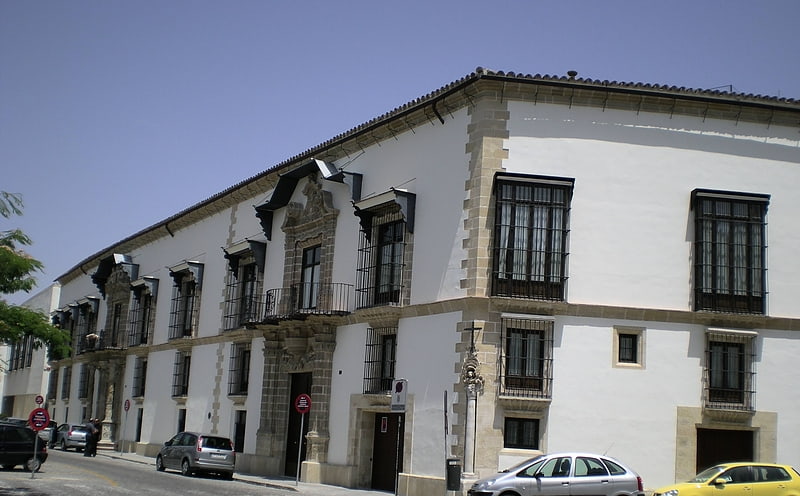
Edifice. The Palace of Bertemati is a historical edifice in Jerez de la Frontera in Andalusia, Spain.
The palace is a Baroque building, constructed by the Sopranis-Davila family in the 18th century on the inner slope of a stream. At the beginning of the 19th century, the family sold the palace. It was subsequently divided into two buildings. The larger building become the property of Jose Bertemati, a successful retailer. Bertemati transformed the property into a neoclassic structure. The smaller building went through a series of owners. It was transformed into an eclectic house with French influences and other neonazaries.
In 1942, under the auspice of Monsignor Bertemati, the Roman Catholic Diocese of Jerez de la Frontera assumed ownership of both buildings. They provided the entire for use by the Franciscan Sisters of Mary Immaculate.
The restoration of the palace began in 2002. It was finished in 2006 taking place the transfer to the new Seat. Monteiro de Castro was inaugurated by the Apostolic Nuncio and the bishop on 8 December 2005.[5]
Church of San Dionisio
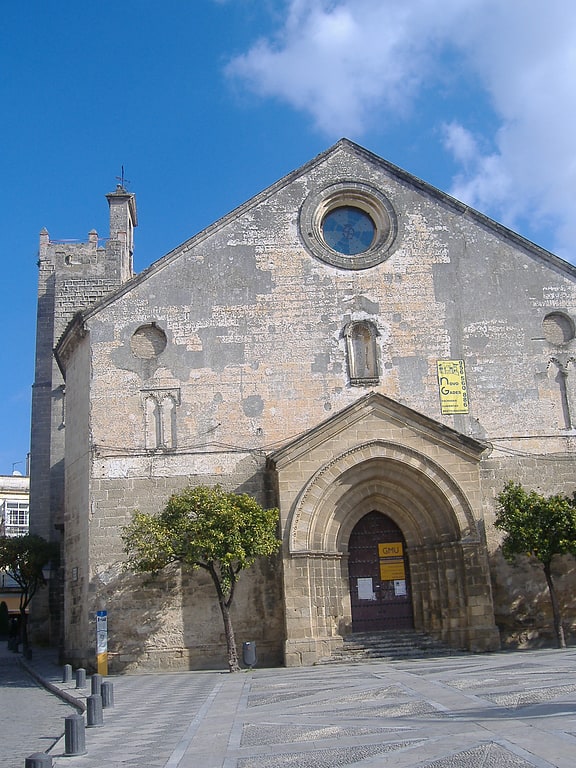
Also known as: Iglesia de San Dionisio
Church in Jerez de la Frontera, Spain. The Church of San Dionisio is a church located in Jerez de la Frontera, Andalusia, Spain. It was built in the late 15th century in Gothic-Mudéjar style, although its interior was later renovated in Baroque style by architects Diego Antonio Díaz and Pedro de Silva. It was declared Bien de Interés Cultural in 1964.[6]
Address: Plaza del Doctor Revuelta y Montiel 7, 11403 Jerez De La Frontera
Church of San Miguel

Also known as: Iglesia de San Miguel
Catholic church in Jerez de la Frontera, Spain. The Church of Saint Michael is a church in Jerez de la Frontera, Spain. It was declared Bien de Interés Cultural in 1931.[7]
Address: Plaza San Miguel 4, 11403 Jerez De La Frontera
Palacio de Campo Real
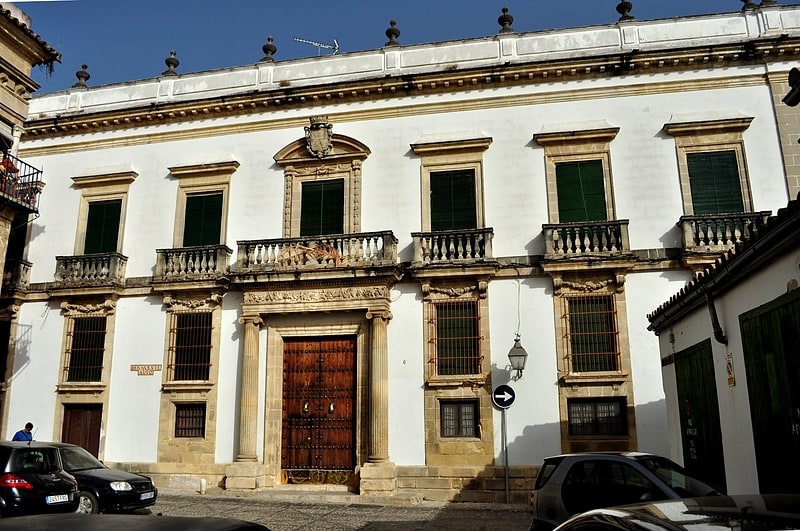
Historical landmark in Jerez de la Frontera, Spain. Palacio de Campo Real is a palace in Jerez de la Frontera, in the Province of Cádiz, in southern Spain. It was built from 1545. It has been declared a Bien de Interés Cultural site.[8]
Address: Plaza de Benavente Alto, 6, 11403 Jerez De La Frontera
Church of Santiago

Also known as: Iglesia de Santiago
Catholic church in Jerez de la Frontera, Spain. The Church of Santiago is a church located in Jerez de la Frontera, Spain. It was declared Bien de Interés Cultural in 1931.[9]
Address: Plaza Santiago, 10, Jerez de la Frontera
Iglesia de San Marcos

Edifice in Jerez de la Frontera, Spain. San Marcos is a Gothic church in Jerez de la Frontera, southern Spain. It was declared Bien de Interés Cultural in 1931.
The church originates from one of the six parishes founded by King Alfonso X of Castile after his conquest of the city in 1264. The current edifice was likely started in the mid-14th century, due to the style of its polygonal apse and the Mudéjar portal, perhaps above a pre-existing mosque. The construction is anyway not documented until the middle of the 15th century, including a substantial renovation in late Gothic style.
The church has three façades, with a main entrance portal in Mannerist style (16th century). The interior has a Baroque high altar (18th century)[10]
San Patricio Bridge
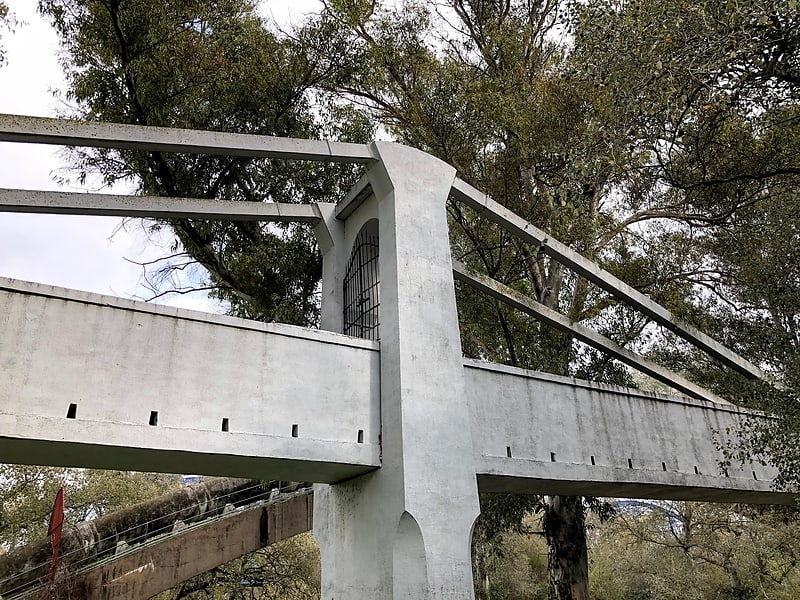
San Patricio bridge is a bridge which supports the Tempul aqueduct as it passes over the River Guadalete, near the town of La Barca de la Florida, in the municipality of Jerez de la Frontera in Spain. Designed in 1925 by the engineer Eduardo Torroja and built under the direction of the engineer Francisco Ruiz Martínez, is considered one of the first exponents of the use of prestressed concrete in Spain. At the time of its construction it became the cable-stayed bridge with the largest span in the world, with 57 metres.[11]
Claustros de Santo Domingo
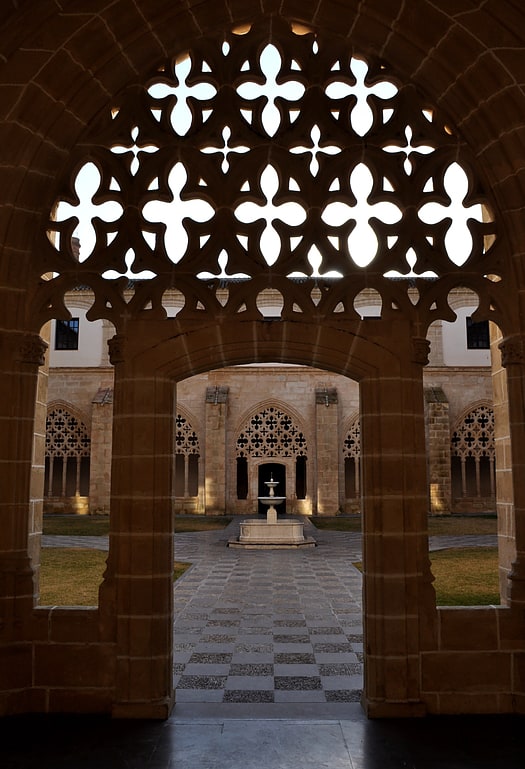
The Cloisters of Santo Domingo are cloisters from the 13th century in Jerez de la Frontera. XIII in Jerez de la Frontera.
Originally linked to the Church of Santo Domingo, it passed to civilian use after the disentailment of Mendizábal in the 19th century, and is therefore managed independently and autonomously.
It is one of the jewels of Gothic architecture in Andalusia and a space of cultural use of the first order in Jerez.
Tower of San Dionisio
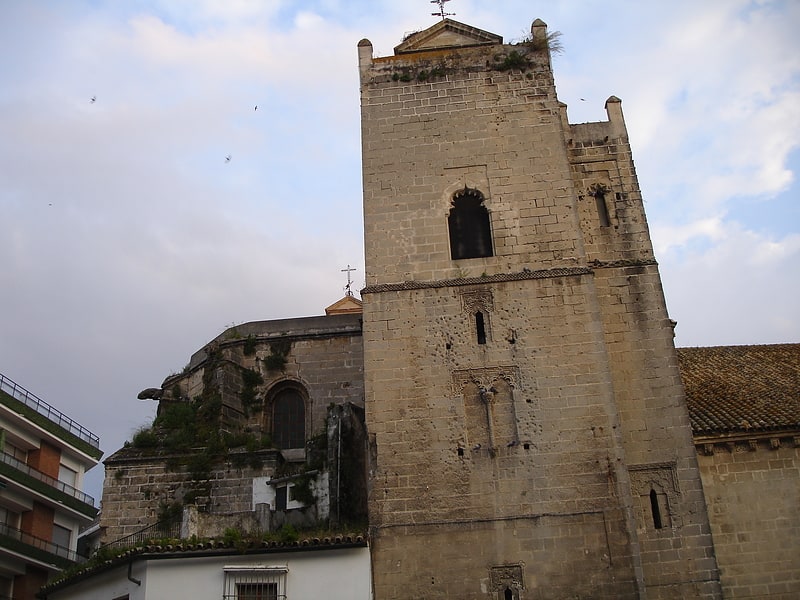
Also known as: Iglesia de San Dionisio #Torre de la Atalaya
The Tower of San Dionisio is a tower located in Jerez de la Frontera, Spain. It was declared Bien de Interés Cultural in 1978.[12]
Hammam Andalusí

Baths, Spa
Address: Calle Salvador 6, 11403 Jerez De La Frontera
Museo de la Miel and the Bees
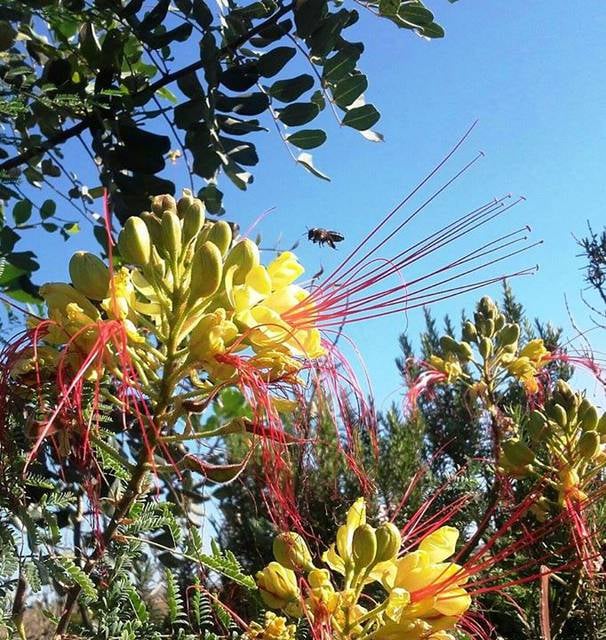
Museum, Farm, Specialty museum, Playground
Address: Pintor Godoy Núero 1, 1º C2, 11510 Cádiz